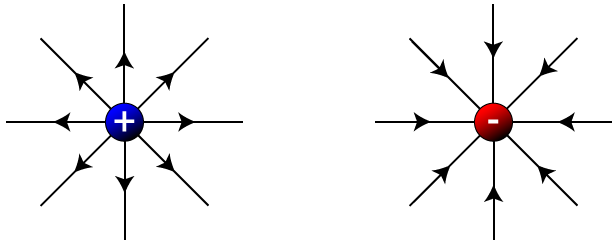Fill This Form To Receive Instant Help
Fill This Form To Receive Instant Help
Homework answers / question archive / Experiment 3: Electric Field Mapping Introduction Every electrically charged object produces an electric field around it at all points in space affecting all other surrounding charged objects
Experiment 3: Electric Field Mapping
Introduction
Every electrically charged object produces an electric field around it at all points in space affecting all other surrounding charged objects. The properties of this field are entirely determined by this “source” charge. In the case of a positive point charge, as shown in the image below, the electric field E
points radially outward in all directions. The magnitude (or “strength”) of this field is greatest where the density of electric field lines is highest; in the image, the lines are most dense near the point charge, where E
is greatest, and the lines are least dense radially away from the point charge, where E
is least.
Note that is the source was negatively charged Q, the direction of the electric field would be, toward the point charge. Therefore, electric field lines radiate away from the positive charges and terminate at negative charges. Because the electric field has both a magnitude and a direction, it is known as vector field.

This “rule” of opposite charges attracting and like charges repelling each other, however, does not have an intuitive explanation based on these definitions.
In this lab exercise we simulate the electric field pattern for 1. two like charges of equal magnitude; 2. two opposite charges of equal magnitude; 3. two like charges of unequal magnitude; 4. two opposite charges of unequal magnitude. These four configurations are shown in Figure below
Procedure
Computer Simulation Online: Charges and Fields
https://phet.colorado.edu/sims/html/charges-and-fields/latest/charges-and-fields_en.html
Part A: Mapping opposite charges (configurations 2. and 4.)
Part B: Mapping like charges (configurations 1. and 3.)
Follow the same procedure as in part A but replace the negative charge with the positive one. Attach the screenshots to your lab report.
Questions:
